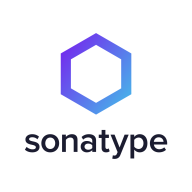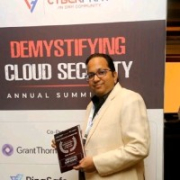

Qualys Web Application Scanning and Sonatype Lifecycle are competing in the domain of application security. Based on feature offerings and user feedback, Sonatype seems to have an upper hand in managing open-source libraries and DevOps integration.
Features: Qualys Web Application Scanning excels with user-friendliness, effective credential scanning options, and robust vulnerability management. It also provides industry-standard support, minimal false positives, and a comprehensive console for web application security. Sonatype Lifecycle offers a strong focus on open-source library management, proactive vulnerability detection, and seamless DevOps integration. It also provides a comprehensive overview of dependencies and real-time monitoring.
Room for Improvement: Qualys Web Application Scanning could improve pricing competitiveness and reduce false positives. Enhancements for zero-day vulnerabilities and better API integration, along with a more intuitive user interface, are needed. Sonatype Lifecycle faces high costs for large deployments and lacks real-time notifications. Users suggest better integration with third-party tools and a simpler interface for non-frequent users.
Ease of Deployment and Customer Service: Qualys Web Application Scanning offers cloud-based deployment, making it versatile for various infrastructures. The customer service is responsive but somewhat transactional. Sonatype Lifecycle supports on-premises, hybrid, and cloud deployments. Its technical support is effective but lacks personal engagement. Both products offer solid support but could benefit from enhanced customer interaction and guidance.
Pricing and ROI: Qualys Web Application Scanning offers negotiable pricing with discounts but can still be high for some organizations. It provides a good ROI with automation and integration. Sonatype Lifecycle's pricing is competitive for its features but costly for large enterprises due to its licensing strategy. Both tools offer significant ROI through operational efficiencies, though Sonatype's pricing could limit broader adoption.
We have seen cost savings and efficiency improvements as we now know what happens in what was previously a black box.
They have various options in the vulnerability management process, and when we initially bought our license, we didn't realize we needed PCI for better results, which isn't included in the default configurations.
Once we purchase the license, we have access to top-notch support.
I have dealt with Qualys's technical support, and any enhancements are challenging.
They are helpful when we raise any tickets.
It produces similar vulnerability results as other tools such as Nessus based on version checks instead of real impact checks.
It is licensed for assets, so we just contact the team for additional licenses if needed.
At one point, there was a limitation on reporting for 100,000 assets at a time.
JFrog is easier to configure for high availability as it does not require extra components.
Sonatype Lifecycle is very stable, especially in the binary repository management use case for managing binary artifacts.
Qualys Web Application Scanning does IP-level testing, requiring direct input of credentials, and can only scan a few pages to provide known generic vulnerabilities.
With the growing reliance on AI, Qualys Web Application Scanning should be updated to handle AI-based applications and LLM-based attacks.
I would like it to be cheaper because it is a bit expensive compared to competitors like Tenable Nessus.
We also noticed a lack of detailed information for configuring Sonatype Lifecycle for high availability and data recovery.
They offer discounts on bulk licenses, making it cheaper compared to competitors like Veracode DAST.
I find it a bit expensive compared to other competitors.
Regarding pricing, I think for personal use, it is costly, but if organizations are ready to pay, then it is fine as they are using it.
For larger numbers like our case with 1,000 user licenses, JFrog becomes much more cost-effective, roughly ten times cheaper than Sonatype.
It effectively detects vulnerabilities like the OWASP Top 10 without any issues in reporting.
The advantage of Qualys Web Application Scanning lies in its user-friendly dashboard and appealing reports, which are useful for presentation to leadership.
The product helps by providing options for remediating vulnerabilities it finds, making it really useful.
The integration into our CICD pipeline enables us to continuously monitor code changes and identify new vulnerabilities.
The most valuable feature for us is Sonatype Lifecycle's capability in identifying vulnerabilities.
| Product | Market Share (%) |
|---|---|
| Sonatype Lifecycle | 2.6% |
| Qualys Web Application Scanning | 2.2% |
| Other | 95.2% |


| Company Size | Count |
|---|---|
| Small Business | 8 |
| Midsize Enterprise | 6 |
| Large Enterprise | 27 |
| Company Size | Count |
|---|---|
| Small Business | 12 |
| Midsize Enterprise | 8 |
| Large Enterprise | 29 |
Qualys Web Application Scanning (WAS) is a fully cloud-based web application security scanner. The scanner will automatically crawl periodically and test web applications to discover potential vulnerabilities, including cross-site scripting (XSS) and SQL injection. The consistent testing equips the automated service to generate consistent results, lessen false positives, and offer the ability to scale to protect thousands of websites effortlessly.
Qualys Web Application Scanning is bundled with different scanning technology to carefully scan websites for malware infections and will send notifications to website owners to assist in preventing blacklisting and brand reputation damage. As digital transformation takes place in various organizations, Qualys WAS gives organizations the ability to track and document their web app security status through its interactive reporting capabilities.
Qualys WAS empowers organizations to remediate any web application vulnerabilities quickly. Some of the key tools offered are:
Benefits of Qualys Web Application Scanning
Qualys Web Application Scanning offers many benefits, including:
Reviews from Real Users
Qualys Web Application Scanning stands out among its competitors for a variety of reasons. Two of those reasons are its progressive scan and quick detection of vulnerabilities.
P.K., a senior software developer at a tech vendor, writes, "The feature that I have found most valuable is the progressive scan. It is good. It's done in 24 hours."
Nagaraj S., lead cybersecurity engineer at a tech service company, notes, "I have found the detection of vulnerabilities tool thorough with good results and the graphical display output to be wonderful and full of colors. It allows many types of outputs, such as bar and chart previews."
Sonatype Lifecycle is an open-source security and dependency management software that uses only one tool to automatically find open-source vulnerabilities at every stage of the System Development Life Cycle (SDLC). Users can now minimize security vulnerabilities, permitting organizations to enhance development workflow. Sonatype Lifecycle gives the user complete control over their software supply chain, allowing them to regain wasted time fighting risks in the SDLC. In addition, this software unifies the ability to define rules, actions, and policies that work best for your organizations and teams.
Sonatype Lifecycle allows users to help their teams discover threats before an attack has the chance to take place by examining a database of known vulnerabilities. With continuous monitoring at every stage of the development life cycle, Sonatype Lifecycle enables teams to build secure software. The solution allows users to utilize a complete automated solution within their existing workflows. Once a potential threat is identified, the solution’s policies will automatically rectify it.
Benefits of Open-source Security Monitoring
As cybersecurity attacks are on the rise, organizations are at constant risk for data breaches. Managing your software supply chain gets trickier as your organization grows, leaving many vulnerabilities exposed. With easily accessible source code that can be modified and shared freely, open-source monitoring gives users complete transparency. A community of professionals can inspect open-source code to ensure fewer bugs, and any open-source dependency vulnerability will be detected and fixed rapidly. Users can use open-source security monitoring to avoid attacks through automatic detection of potential threats and rectification immediately and automatically.
Reviews from Real Users
Sonatype Lifecycle software receives high praise from users for many reasons. Among them are the abilities to identify and rectify vulnerabilities at every stage of the SDLC, help with open-source governance, and minimize risk.
Michael E., senior enterprise architect at MIB Group, says "Some of the more profound features include the REST APIs. We tend to make use of those a lot. They also have a plugin for our CI/CD.”
R.S., senior architect at a insurance company, notes “Specifically features that have been good include:
• the email notifications
• the API, which has been good to work with for reporting, because we have some downstream reporting requirements
• that it's been really user-friendly to work with.”
"Its engine itself is most valuable in terms of the way it calculates and decides whether a security vulnerability exists or not. That's the most important thing. Its security is also pretty good, and its listing about the severities is also good," says Subham S., engineering tools and platform manager at BT - British Telecom.
We monitor all Application Security Tools reviews to prevent fraudulent reviews and keep review quality high. We do not post reviews by company employees or direct competitors. We validate each review for authenticity via cross-reference with LinkedIn, and personal follow-up with the reviewer when necessary.